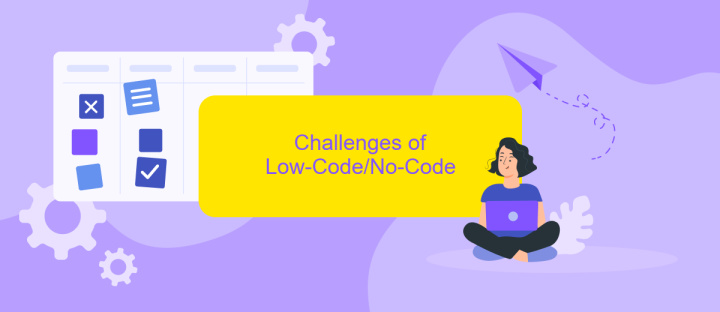What is Low-Code/No-Code
Low-code/no-code platforms are revolutionizing the way software is developed by enabling users to create applications with minimal or no coding knowledge. These innovative tools empower businesses to accelerate their digital transformation, reduce development costs, and enhance collaboration between technical and non-technical teams. In this article, we will explore what low-code/no-code platforms are, their benefits, and how they are reshaping the future of software development.
What is Low-Code/No-Code?
Low-Code/No-Code platforms are revolutionizing the way applications are developed by allowing individuals with minimal or no programming skills to create software through graphical user interfaces and configuration. These platforms provide a more accessible approach to software development, enabling faster deployment and reducing dependency on traditional coding expertise.
- Low-Code: Requires some level of coding but significantly less than traditional development. It is ideal for developers looking to speed up the development process.
- No-Code: Completely eliminates the need for coding, allowing non-developers such as business analysts and project managers to create applications.
- Integration Tools: Services like ApiX-Drive help in automating workflows by integrating various applications without the need for complex coding.
By leveraging Low-Code/No-Code platforms, businesses can rapidly prototype, iterate, and deploy applications, thus enhancing agility and innovation. These platforms are particularly beneficial for small to medium-sized enterprises looking to optimize their operations without extensive IT resources.
Benefits of Low-Code/No-Code

Low-Code/No-Code platforms offer numerous benefits, making them increasingly popular among businesses and developers. One significant advantage is the reduction in development time. These platforms allow users to create applications through visual interfaces and pre-built modules, eliminating the need for extensive coding knowledge. This accelerates the development process, enabling faster deployment of applications and reducing time-to-market for new solutions.
Another key benefit is the democratization of software development. Low-Code/No-Code tools empower non-technical users to participate in the creation and customization of applications, fostering innovation across departments. Additionally, these platforms often come with built-in integrations, such as ApiX-Drive, which simplifies the connection between various services and automates workflows. This not only enhances efficiency but also ensures that different systems within an organization can seamlessly communicate with each other, leading to improved operational performance.
Challenges of Low-Code/No-Code

While Low-Code/No-Code platforms offer numerous benefits, they also present several challenges that organizations must consider. These challenges can impact the overall effectiveness and adoption of such platforms within a business environment.
- Limited Customization: Despite their flexibility, Low-Code/No-Code platforms often have limitations in terms of customization, which can be restrictive for complex projects.
- Scalability Issues: As businesses grow, the scalability of Low-Code/No-Code solutions can become a concern, potentially requiring a shift to more robust development platforms.
- Integration Difficulties: Integrating Low-Code/No-Code applications with existing systems can be challenging. Services like ApiX-Drive can facilitate these integrations, but they may add to the complexity and cost.
- Security Risks: These platforms may not always provide the same level of security as custom-coded solutions, making them vulnerable to potential threats.
- Vendor Lock-in: Relying heavily on a single Low-Code/No-Code platform can lead to vendor lock-in, limiting future flexibility and innovation.
Addressing these challenges requires careful planning and a thorough understanding of the specific needs and constraints of the organization. By leveraging tools such as ApiX-Drive for seamless integrations and being mindful of potential limitations, businesses can better navigate the complexities of Low-Code/No-Code development.
Use Cases for Low-Code/No-Code

Low-code/no-code platforms have revolutionized the way businesses approach software development, making it accessible to non-developers. These platforms enable rapid application development, allowing organizations to quickly adapt to changing market needs and streamline operations.
One of the primary use cases for low-code/no-code platforms is in automating routine business processes. By leveraging these tools, companies can create custom workflows and applications without the need for extensive coding knowledge. This leads to increased efficiency and reduced operational costs.
- Automating routine business processes
- Developing custom workflows and applications
- Creating internal tools and dashboards
- Integrating various software systems
- Rapid prototyping and testing of new ideas
Another significant use case is in the integration of different software systems. Services like ApiX-Drive facilitate seamless integration, allowing businesses to connect various applications and automate data flow between them. This ensures that all systems work harmoniously, improving overall productivity and data accuracy.


Future of Low-Code/No-Code
The future of Low-Code/No-Code platforms looks incredibly promising as they continue to democratize software development. These platforms enable businesses to rapidly build applications without the need for extensive coding knowledge, thus reducing development time and costs. As more companies recognize the benefits, the adoption of Low-Code/No-Code solutions is expected to surge, empowering a broader range of professionals to participate in the app development process.
Integration capabilities will play a crucial role in the evolution of these platforms. Services like ApiX-Drive will become increasingly important, allowing users to seamlessly connect various applications and automate workflows. By simplifying the integration process, ApiX-Drive helps businesses streamline operations and enhance productivity. As Low-Code/No-Code technologies advance, we can anticipate more sophisticated features, improved user experiences, and greater scalability, making them an indispensable tool in the digital transformation journey.
FAQ
What is Low-Code/No-Code?
Who can benefit from Low-Code/No-Code platforms?
Are Low-Code/No-Code platforms secure?
Can Low-Code/No-Code platforms be used for automation and integration?
What are the limitations of Low-Code/No-Code platforms?
Time is the most valuable resource in today's business realities. By eliminating the routine from work processes, you will get more opportunities to implement the most daring plans and ideas. Choose – you can continue to waste time, money and nerves on inefficient solutions, or you can use ApiX-Drive, automating work processes and achieving results with minimal investment of money, effort and human resources.

